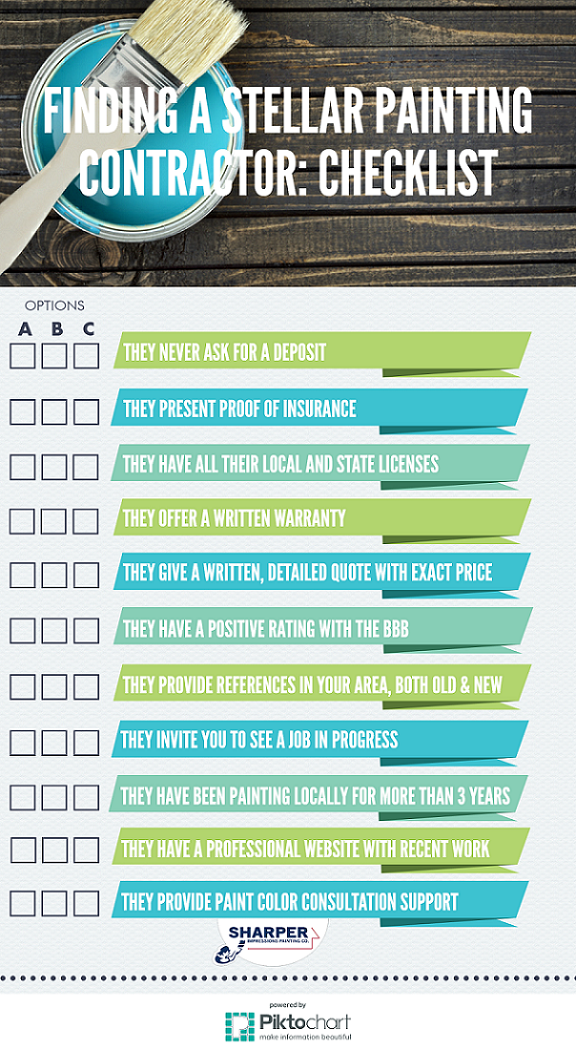Understand How Seasonal Conditions Impact The Success Of Business Outside Paint And Discover The Ideal Periods To Ensure Lasting End Results For Your Project
Understand How Seasonal Conditions Impact The Success Of Business Outside Paint And Discover The Ideal Periods To Ensure Lasting End Results For Your Project
Blog Article
Composed By-Carlson Bagger
When you're planning a commercial external painting job, seasonal aspects can make or break your results. You'll want to consider exactly how temperature and humidity impact paint application and drying out times. Selecting the appropriate period can ensure your paint sticks correctly and lasts much longer. However which periods are truly the best for this sort of job? Let's check out the key elements that can affect your project's success.
The Impact of Temperature on Paint Application
When you're preparing a business exterior paint project, the temperature level can significantly influence exactly how well the paint sticks and dries.
Ideally, you intend to repaint when temperature levels range in between 50 ° F and 85 ° F. If it's too cool, the paint may not cure properly, bring about concerns like peeling off or breaking.
On the other hand, if it's too hot, the paint can dry as well swiftly, avoiding correct attachment and causing an irregular finish.
You must likewise think about the moment of day; morning or late afternoon uses cooler temperature levels, which can be a lot more positive.
Constantly check the supplier's recommendations for the specific paint you're utilizing, as they commonly provide advice on the suitable temperature array for ideal results.
Humidity and Its Impact on Drying Times
Temperature isn't the only ecological aspect that affects your business exterior paint task; humidity plays a substantial duty also. High humidity degrees can reduce drying out times drastically, affecting the total top quality of your paint work.
When the air is saturated with moisture, the paint takes longer to treat, which can bring about concerns like bad attachment and a higher danger of mold development. If you're painting on an especially damp day, be planned for prolonged delay times in between layers.
It's essential to keep track of local weather and strategy appropriately. Ideally, aim for moisture levels in between 40% and 70% for optimal drying out.
Keeping these consider mind ensures your job stays on track and provides a lasting surface.
Best Seasons for Commercial Outside Paint Projects
What's the best season for your industrial external paint tasks?
Spring and very early autumn are normally your best bets. During these seasons, temperature levels are moderate, and moisture degrees are typically reduced, producing ideal problems for paint application and drying.
Stay clear of summer's intense heat, which can trigger paint to dry as well promptly, leading to inadequate attachment and surface. Similarly, https://keeganjwisc.bloggadores.com/34700390/finest-practices-for-achieving-top-quality-outcomes-with-your-paint-contractors can prevent correct drying and treating, risking the long life of your paint job.
Aim for days with temperatures between 50 ° F and 85 ° F for optimal outcomes. Bear in mind to examine the local weather report for rainfall, as wet conditions can spoil your job.
Preparation around these aspects ensures your paint task runs efficiently and lasts much longer.
Verdict
To conclude, planning your commercial exterior painting jobs around seasonal considerations can make a substantial distinction in the outcome. By organizing job throughout the ideal temperature levels and moisture levels, you'll guarantee far better attachment and drying out times. Keep in mind to keep an eye on local weather prediction and pick the correct time of year-- springtime and very early loss are your best bets. Taking Highly recommended Site will certainly help you attain a sturdy and professional coating that lasts.
